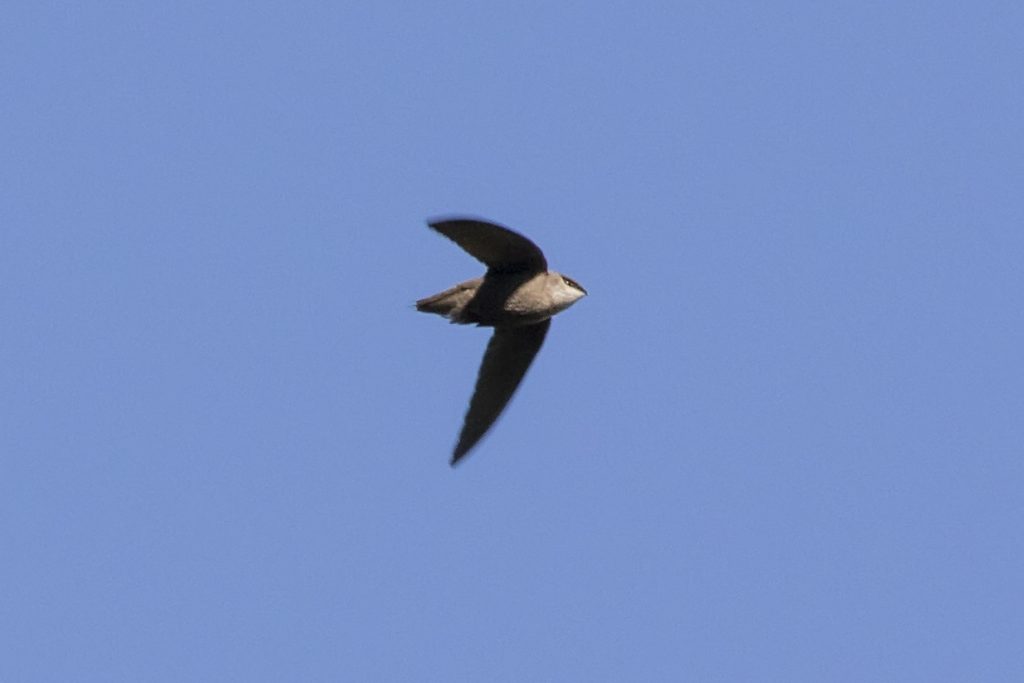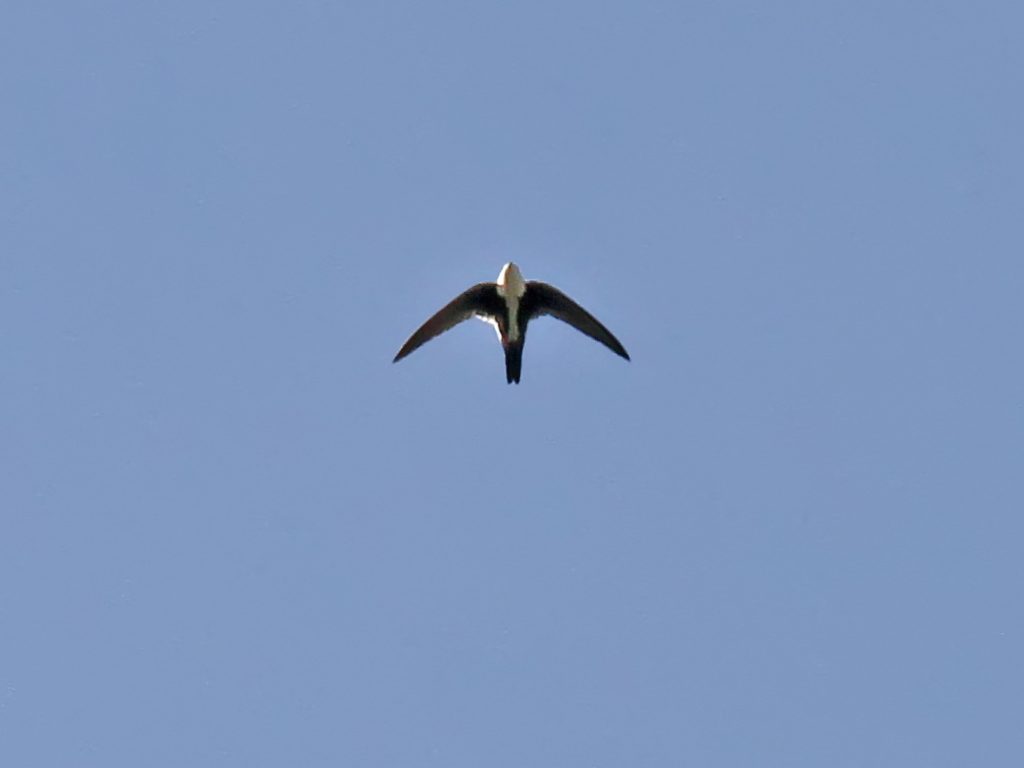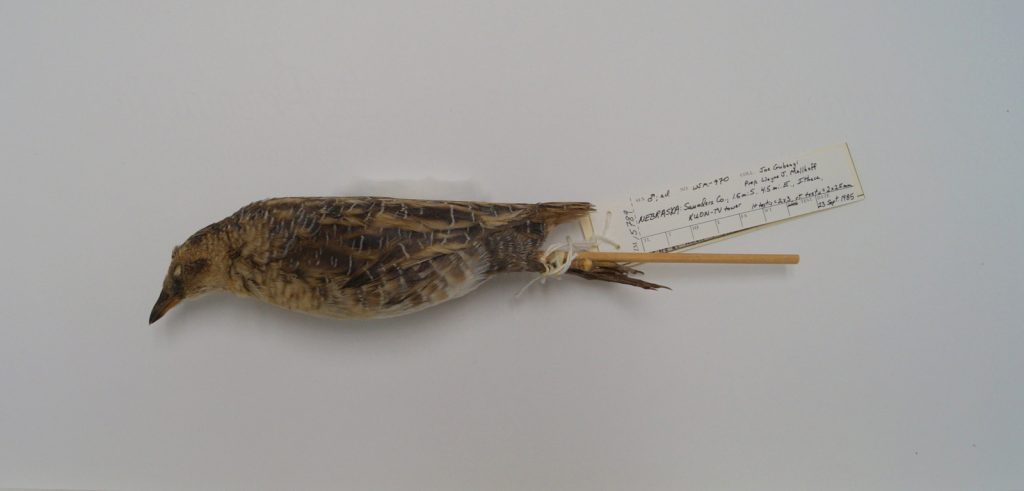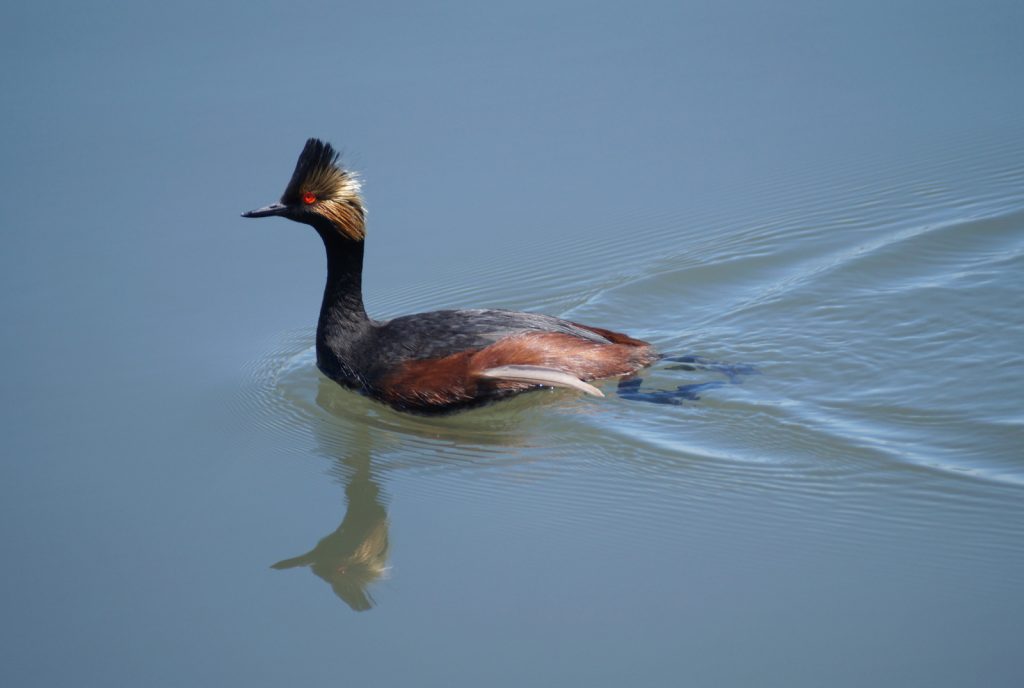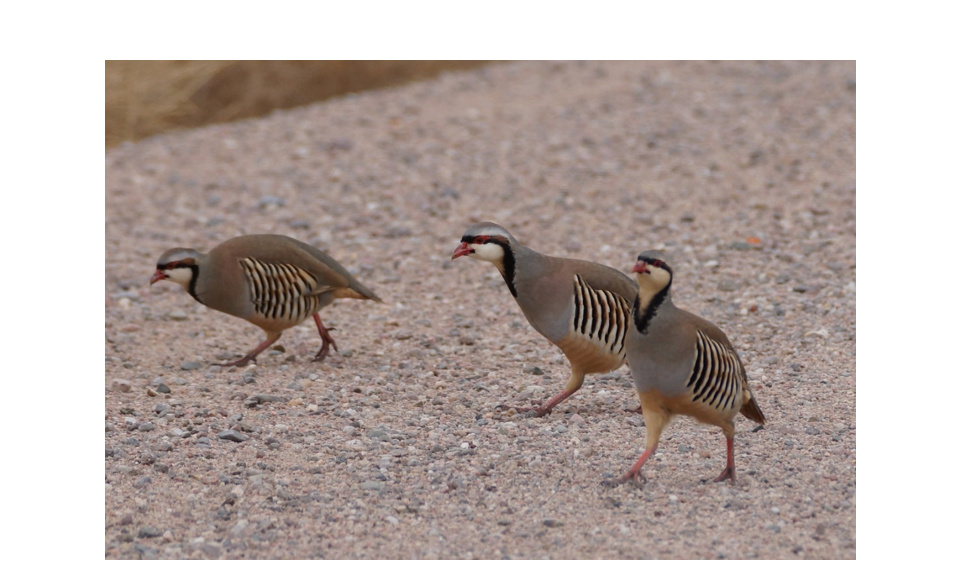Chaetura pelagica Status: Common regular spring and fall migrant and breeder east and central, uncommon west. Documentation: Specimen: UNSM ZM12811, 23 Jun 1892 Lancaster Co. Taxonomy: No subspecies are recognized (AviList 2025). Spring: Apr 13, 13, 13 <<<> summer (east, south); Apr 22, 23, 23 <<<>>> summer (north); Apr 25, 25, 26 <<<>>> summer (west). […]
WHITE-THROATED SWIFT
Aeronautes saxatilis saxatilis Status: Fairly common regular spring and fall migrant west. Uncommon local regular breeder west. Documentation: Specimen: UNSM ZM12814, 1892 Squaw Canyon, Sioux Co. Taxonomy: Two subspecies are recognized (AviList 2025), one, nigrior, from southern Mexico to Honduras, and the other, saxatilis, from southwest Canada south to western Mexico, east to the western […]
YELLOW RAIL
Coturnicops noveboracensis noveboracensis Status: Rare casual spring and fall migrant central and east, accidental west. Documentation: Specimen: UNSM ZM12604, 8 May 1909 South Bend, Cass Co. Taxonomy: Two subspecies are recognized, noveboracensis of North America, and goldmani of central Mexico (AviList 2025); goldmani may be extinct (Leston and Bookhout 2020). Nebraska birds are noveboracensis. Spring: […]
EARED GREBE
Podiceps nigricollis californicus Status: Common regular spring and fall migrant central and west, fairly common east. Common regular breeder north and west, rare southeast. Rare casual summer visitor south and east. Documentation: Specimen: UNSM ZM6006, 25 Sep 1927 Lancaster Co. Taxonomy: Three subspecies are recognized: californicus in North and Central America, gurneyi in Africa, and […]
[CHUKAR]
Alectoris chukar Status: No accepted records. Taxonomy: There are 14 subspecies in the native Eurasian range (AviList 2025). AviList (2025) calls this species Chukar Partridge. Comments: Several attempts were made to establish this species in Nebraska with releases between 1938 and 1943 of about 6500 birds, but these were unsuccessful, possibly due to predation (Mathisen […]
[COMMON QUAIL]
Coturnix coturnix Status: No accepted records. Taxonomy: Five subspecies are currently recognized in its native Eurasian and African range (AviList 2025). Common Quail is considered monophyletic since the split of Japanese Quail Coturnix japonica (McGowan et al 2023). Comments: The only information regarding this species (rather than Japanese Quail) in Nebraska is of the release […]
